Given the geometric sequence, find a formula for the general term and use it to determine the \(5^{th}\) term in the sequence. . N5 Sample Questions Vocabulary Section Explained (PDF/133.3kb). \frac{2}{3}, \frac{3}{4},\frac{4}{5}, \frac{5}{6}, \frac{6}{7}, Write the first five terms of the sequence. If it converges, find the limit. Sequences Questions and Answers | Homework.Study.com Then so is \(n^5-n\), as it is divisible by \(n^2+1\). Using the nth term - Sequences - Edexcel - BBC Bitesize Give the first term and the common ratio for the given geometric sequence. The Fibonacci Sequence is found by adding the two numbers before it together. Your answer will be in terms of n. (b) What is the second-to-last term? Write a recursive formula for the following sequence. + n be the length of the sides of the square in the figure. a_n = \ln(4n - 4) - \ln(3n -1), What is the recursive rule for a_n = 2n + 11? 3, 6, 9, 12), there will probably be a three in the formula, etc. What is the formula for the nth term of the sequence 15, 13, 11, 9, ? Write the first five terms of the sequence whose general term is a_n = \frac{3^n}{n}. Lets take a look at the answers:if(typeof ez_ad_units!='undefined'){ez_ad_units.push([[580,400],'jlptbootcamp_com-medrectangle-3','ezslot_4',103,'0','0'])};__ez_fad_position('div-gpt-ad-jlptbootcamp_com-medrectangle-3-0'); 1) 1 is the correct answer. So this is one minus 4/1 plus six. F-n using the following equation. \(a_{n}=2\left(\frac{1}{4}\right)^{n-1}, a_{5}=\frac{1}{128}\), 5. Find term 21 of the following sequence. Number Sequences - Square, Cube and Fibonacci Answer In exercises 14-18, find a function f(n) that identifies the nth term an of the following recursively defined sequences, as an = f(n). a_n = 2^n + n, Write the first five terms of each sequence an. For the geometric sequence 5 / 3, -5 / 6, 5 / {12}, -5 / {24}, . Apply the Monotonic Sequence Theorem to show that lim n a n exists. 1st term + common difference (desired term - 1). Hint: Write a formula to help you. a n = 1 + 8 n n, Find a formula for the sum of n terms. This is where doing some reading or just looking at a lot of kanji will help your brain start to sort out valid kanji from the imitations. . Nothing further can be done with this topic. a_n=3(1-(1.5)^n)/(1-1.5), Create a scatter plot of the terms of the sequence. In a number sequence, the order of the sequence is important, and depending on the sequence, it is possible for the same terms to appear multiple times. Determine whether the sequence is (eventually) decreasing, (eventually) increasing, or neither. &=25k^2+20k+5\\ a_n = ((-1)^n n)/(factorial of (n) + 1). To find the tenth term of the sequence, for example, we would need to add the eighth and ninth terms. Select one. A sequence of numbers a_1, a_2, a_3, is defined by a_{n + 1} = \frac{k(a_n + 2)}{a_n}; n \in \mathbb{N} where k is a constant. This is probably the easiest section of the test to study for because it simply involves a lot of memorization of key words. List the first five terms of the sequence. Explain. a_n = (2n) / (sqrt(n^2+5)). Your answer will be in terms of n. (b) What is the Direct link to Jerry Nilsson's post 3 + 2( 1) Solve for \(a_{1}\) in the first equation, \(-2=a_{1} r \quad \Rightarrow \quad \frac{-2}{r}=a_{1}\) 6. Letters can appear more than once. Rich resources for teaching A level mathematics, \[\begin{align*} a) Find the nth term. a_n = \frac {(-1)^n}{9\sqrt n}, Determine whether the sequence converges or diverges. List the first five terms of the sequence. \(\begin{aligned} a_{n} &=a_{1} r^{n-1} \\ a_{n} &=-5(3)^{n-1} \end{aligned}\). {1/4, 2/9, 3/16, 4/25,}, The first term of a sequence along with a recursion formula for the remaining terms is given below. a_n = (1 + 7 / n)^n. B^n = 2b(n -1) when n>1. If arithmetic, give d; if geometric, give r; if Fibonacci's give the first two For the given sequence 5,15,25, a. Classify the sequences as arithmetic, geometric, Fibonacci, or none of these. Sketch the following sequence. \(1.2,0.72,0.432,0.2592,0.15552 ; a_{n}=1.2(0.6)^{n-1}\). What is the sum of the sequence 5, 10, 15, 20, 25, 30, 35, 40, 45, 50? If it converges, find the limit. Write the first five terms of the sequence (a) using the table feature of a graphing utility and (b) algebraically. Complex Numbers 5. What is a5? Determine whether the sequence is bounded. Sequences . 1/2, -4/3, 9/4, -16/5, 25/6, cdots, Find the limit of the sequence or state if it diverges. Consider the sequence { 2 n 5 n } n = 1 : Find a function f such that a n = f ( n ) . What is the sum of a finite arithmetic sequence from n = 1 to n = 10, using the the expression 3n - 8 for the nth term of the sequence? a_1 = What is the 5^{th} term in the sequence? arrow_forward What term in the sequence an=n2+4n+42 (n+2) has the value 41? a_7 =, Find the indicated term of the sequence. https://www.calculatorsoup.com - Online Calculators. 19. Consider the following sequence 15, - 150, 1500, - 15000, 150000, Find the 27th term. Such sequences can be expressed in terms of the nth term of the sequence. Now #a_{n+1}=(n+1)/(5^(n+1))=(n+1)/(5*5^(n))#. How many terms are in the following sequence? The nth term of a sequence is 2n^2. The best answer is , which means to ride. Notice the -particle that usually uses. If the limit does not exist, then explain why. a_1 = x, d = 2x. 2) 4 is the correct answer. -n by hand and working toward negative infinity, you can restate the sequence equation above and use this as a starting point: For example with n = -4 and referencing the table below, Knuth, D. E., The Art of Computer Programming. Answer 4, contains which means resting. Find the value of sum of 4*absolute of (-3 - i^2) from i = -1 to 1. 19Used when referring to a geometric sequence. Find the 5th term in the sequence See answer Advertisement goodLizard Answer: 15 Step-by-step explanation: (substitute 5 in This might lead to some confusion as to why exactly you missed a particular question. The individual elements in a sequence is often referred to as term, and the number of terms in a sequence is called its length, which can be infinite. What is the next number in the pattern: 4, 9, 16, 25, ? Use \(a_{1} = 10\) and \(r = 5\) to calculate the \(6^{th}\) partial sum. n = 1 , 3*1 + 4 = 3 + 4 = 7. n = 2 ; 3*2 + 4 = 6 + 4 = 10 n = 4 ; 4*4 - 5 = 16 - 5 = 11. (a) Show that the area A of the squar Write the first five terms of the sequence (a) using the table feature of a graphing utility and (b) algebraically. Determine if the sequence {a_n} converges, and if it does, find its limit when a_n = dfrac{6n+(-1)^n}{4n+2}. What about the other answers? 0, 3, 8, 15, 24, Each term is the term number times the next term number. Consider the following sequence: a_1 = 3, \; a_{n+1} = \dfrac{4}{5} -a_n. Find the second and the third element in the sequence. So \(30\) divides every number in the sequence. The pattern is continued by adding 3 to the last number each time, like this: This sequence has a difference of 5 between each number. Given the sequence b^1 = 5. The first term of a geometric sequence may not be given. \end{align*}\], \[\begin{align*} sequence \{1, 0, - 1, 0, 1, 0, -1, 0, \dots\}. Let a_1 represent the original amount in Find the nth term of a sequence whose first four terms are given. A geometric sequence is a sequence where the ratio \(r\) between successive terms is constant. (a) n + 2 terms, since to get 1 using the formula 6n + 7 we must use n = 1. Consider a fish population that increases by 8\% each month and from which 300 fish are harvested each month. How much money did Is the following sequence arithmetic, geometric, or neither? a_n = \frac{2n}{n + 1}, Use a graphing utility to graph the first 10 terms of the sequence. For the sequence bn = \frac{3n^4 + 2n^3 - n^2 + 8}{3n + 2n^4}, tell whether it converges or diverges. s (n) = 1 / {n^2} ({n (n + 1)} / 2). Fibonacci Calculator From this we see that any geometric sequence can be written in terms of its first element, its common ratio, and the index as follows: \(a_{n}=a_{1} r^{n-1} \quad\color{Cerulean}{Geometric\:Sequence}\). The common difference could also be negative: This common difference is 2 For example, find an explicit formula for 3, 5, 7, 3, comma, 5, comma, 7, comma, point, point, point, a, left parenthesis, n, right parenthesis, equals, 3, plus, 2, left parenthesis, n, minus, 1, right parenthesis, a, left parenthesis, n, right parenthesis, n, start superscript, start text, t, h, end text, end superscript, b, left parenthesis, 10, right parenthesis, b, left parenthesis, n, right parenthesis, equals, minus, 5, plus, 9, left parenthesis, n, minus, 1, right parenthesis, b, left parenthesis, 10, right parenthesis, equals, 2, slash, 3, space, start text, p, i, end text, 5, comma, 8, comma, 11, comma, point, point, point, start color #0d923f, 5, end color #0d923f, start color #ed5fa6, 3, end color #ed5fa6, equals, start color #0d923f, 5, end color #0d923f, plus, 0, dot, start color #ed5fa6, 3, end color #ed5fa6, equals, 5, start color #0d923f, 5, end color #0d923f, start color #ed5fa6, plus, 3, end color #ed5fa6, equals, start color #0d923f, 5, end color #0d923f, plus, 1, dot, start color #ed5fa6, 3, end color #ed5fa6, equals, 8, start color #0d923f, 5, end color #0d923f, start color #ed5fa6, plus, 3, plus, 3, end color #ed5fa6, equals, start color #0d923f, 5, end color #0d923f, plus, 2, dot, start color #ed5fa6, 3, end color #ed5fa6, equals, 11, start color #0d923f, 5, end color #0d923f, start color #ed5fa6, plus, 3, plus, 3, plus, 3, end color #ed5fa6, equals, start color #0d923f, 5, end color #0d923f, plus, 3, dot, start color #ed5fa6, 3, end color #ed5fa6, equals, 14, start color #0d923f, 5, end color #0d923f, start color #ed5fa6, plus, 3, plus, 3, plus, 3, plus, 3, end color #ed5fa6, equals, start color #0d923f, 5, end color #0d923f, plus, 4, dot, start color #ed5fa6, 3, end color #ed5fa6, equals, 17, start color #0d923f, 5, end color #0d923f, start color #ed5fa6, plus, 3, end color #ed5fa6, left parenthesis, n, minus, 1, right parenthesis, start color #0d923f, A, end color #0d923f, start color #ed5fa6, B, end color #ed5fa6, start color #0d923f, A, end color #0d923f, plus, start color #ed5fa6, B, end color #ed5fa6, left parenthesis, n, minus, 1, right parenthesis, 2, comma, 9, comma, 16, comma, point, point, point, d, left parenthesis, n, right parenthesis, equals, 9, comma, 5, comma, 1, comma, point, point, point, e, left parenthesis, n, right parenthesis, equals, f, left parenthesis, n, right parenthesis, equals, minus, 6, plus, 2, left parenthesis, n, minus, 1, right parenthesis, 3, plus, 2, left parenthesis, n, minus, 1, right parenthesis, 5, plus, 2, left parenthesis, n, minus, 2, right parenthesis, 2, comma, 8, comma, 14, comma, point, point, point, start color #0d923f, 2, end color #0d923f, start color #ed5fa6, 6, end color #ed5fa6, start color #0d923f, 2, end color #0d923f, start color #ed5fa6, plus, 6, end color #ed5fa6, left parenthesis, n, minus, 1, right parenthesis, start color #0d923f, 2, end color #0d923f, start color #ed5fa6, plus, 6, end color #ed5fa6, n, 2, plus, 6, left parenthesis, n, minus, 1, right parenthesis, 12, comma, 7, comma, 2, comma, point, point, point, 12, plus, 5, left parenthesis, n, minus, 1, right parenthesis, 12, minus, 5, left parenthesis, n, minus, 1, right parenthesis, 124, start superscript, start text, t, h, end text, end superscript, 199, comma, 196, comma, 193, comma, point, point, point, what dose it mean to create an explicit formula for a geometric. A nonlinear system with these as variables can be formed using the given information and \(a_{n}=a_{1} r^{n-1} :\): \(\left\{\begin{array}{l}{a_{2}=a_{1} r^{2-1}} \\ {a_{5}=a_{1} r^{5-1}}\end{array}\right. Assume that n starts at 1. .? a n = ( 1 2 n ) n, Find the limits of the following sequence as n . Student Tutor. On the first day of camp I swam 2 laps. Using the nth term Assume n begins with 1. a_n = (2/n)(n + (2/n)(n(n - 1)/2 - n)). The main thing to notice in your sequence is that there are actually 2 different patterns taking place --- one in the numerator and one in the denominator. This is essentially just testing your understanding of . 21The terms between given terms of a geometric sequence. a_n = (5(-1)^n + 3)((n + 1)/n). a_n = (-1)^{n + 1} \frac{n}{n + 1}, Find the first four terms of the sequence with a recursive formula. Answer 2, means to rise or ascend, for example to go to the second floor we can say 2 . How do you use the direct Comparison test on the infinite series #sum_(n=1)^oo5/(2n^2+4n+3)# ? Use to determine the 100 th term in the sequence. Theory of Equations 3. Nth Term Free PDF Download Vocabulary From Classical Roots A Grade In this case this is simply their product, \(30\), as they have no common prime factors. List the first five terms of the sequence. An arithmetic sequence is defined by U_n=11n-7. (If an answer does not exist, specify.) Use this and the fact that \(a_{1} = \frac{18}{100}\) to calculate the infinite sum: \(\begin{aligned} S_{\infty} &=\frac{a_{1}}{1-r} \\ &=\frac{\frac{18}{100}}{1-\left(\frac{1}{100}\right)} \\ &=\frac{\frac{18}{100}}{\frac{90}{100}} \\ &=\frac{18}{100} \cdot \frac{100}{99} \\ &=\frac{2}{11} \end{aligned}\).

















